by Director of Gardens Perry Mathewes
Weeds!
There are three things that take up a gardener’s day this time of year: mowing, watering and pulling weeds. Weeds seem to be the worst. Our staff can spend an entire day pulling weeds and come in the next morning to find more. If he saw what we were doing, Sisyphus would be thankful he only has to roll a rock.
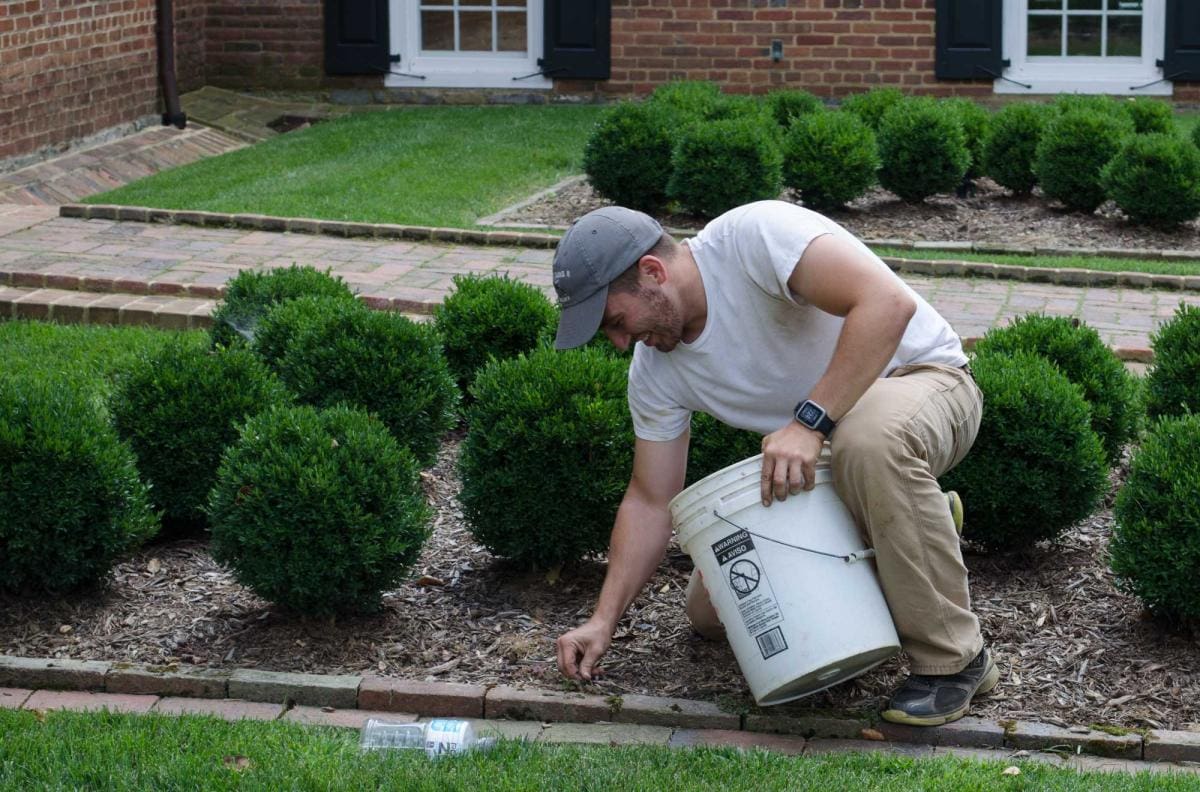
Weeding
Above is a photo of our newest gardener, Jim Talbot, taking care of the weeds in the Knot Garden. I don’t really know why he is smiling, because normally we don’t smile too much while doing this chore. I think it is because he is nervous that his boss is photographing him and he doesn’t know why. Anyway, he is doing a typical task—seeking and destroying as many weeds as we can.
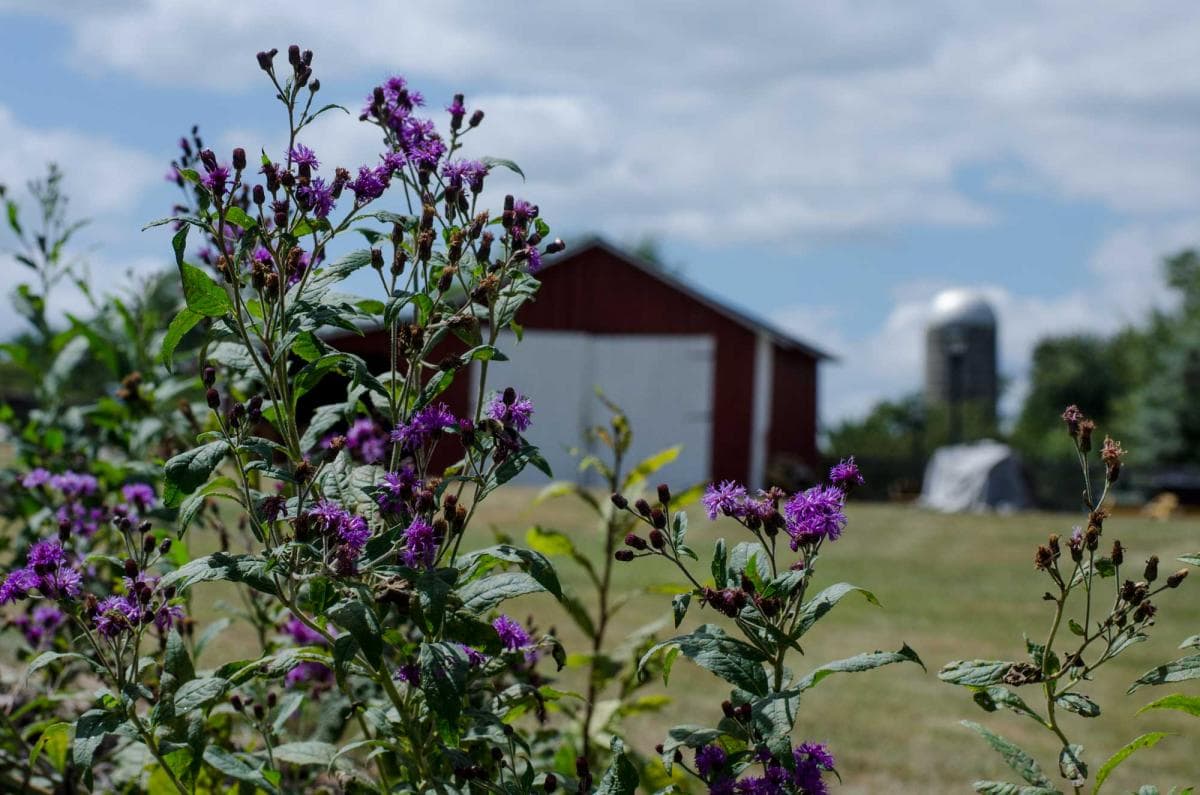
Ironweed
However, that are some weeds we do actually welcome in the garden. Just like Juliet pointed out: “What’s in a name? That which we call a rose by any other name would smell as sweet.” There are weeds that despite their name are desirable garden plants. I am going to share with you three “weeds” that we have right here in the Glen Burnie gardens on purpose.
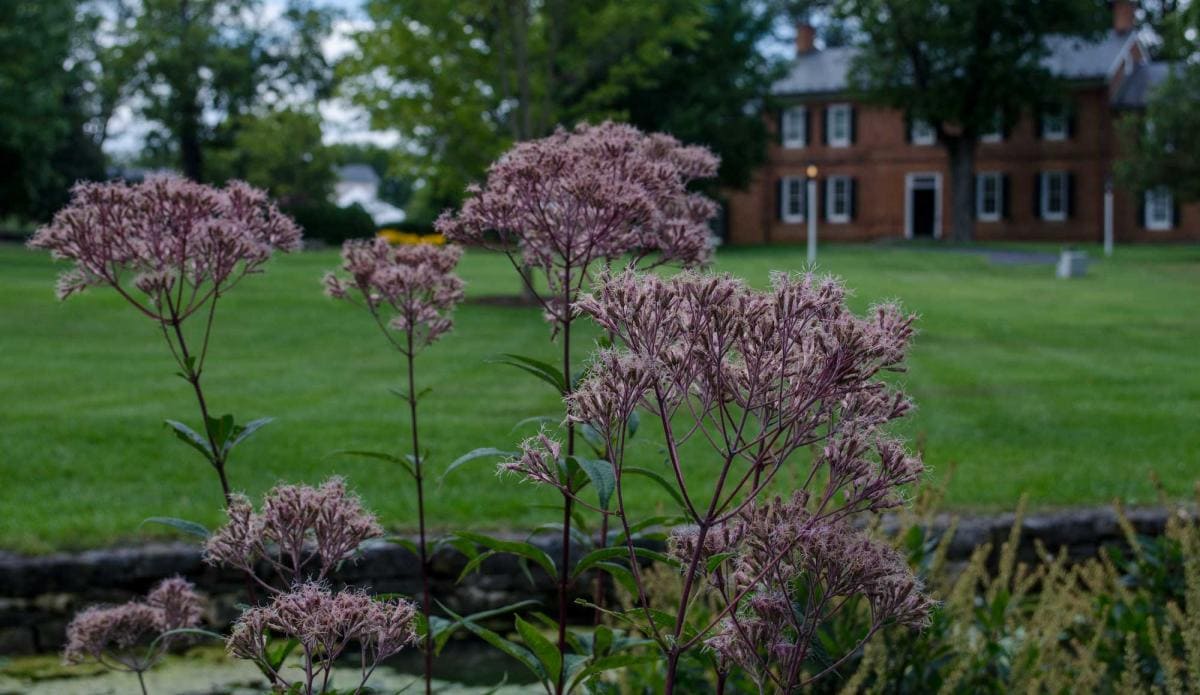
Joe Pye Weed
Joe Pye weed (Eutrochium purpureum) is native to this area and is often thought of as a ditch weed. However, it makes an outstanding plant in the garden. It is tall (think 4-6 feet tall), so it does well in the back of a flower bed, or in our case the center of the large island bed in the Spring Garden. It provides a nice architectural element for the space and is often covered in bees and butterflies. It is a good plant for the late summer when other plants are starting to fade. Even when these flowers finish blooming, the seed heads will remain for quite some time.
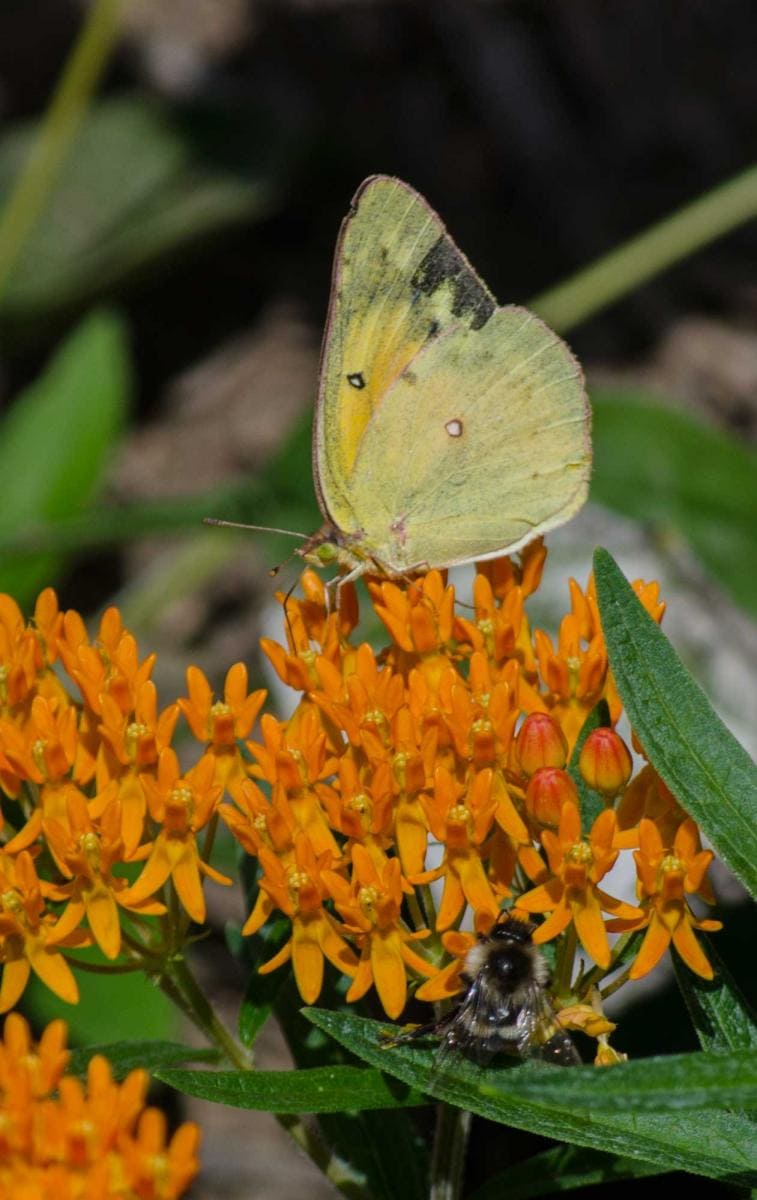
Clouded Sulphur Butterfly on Butterfly Weed
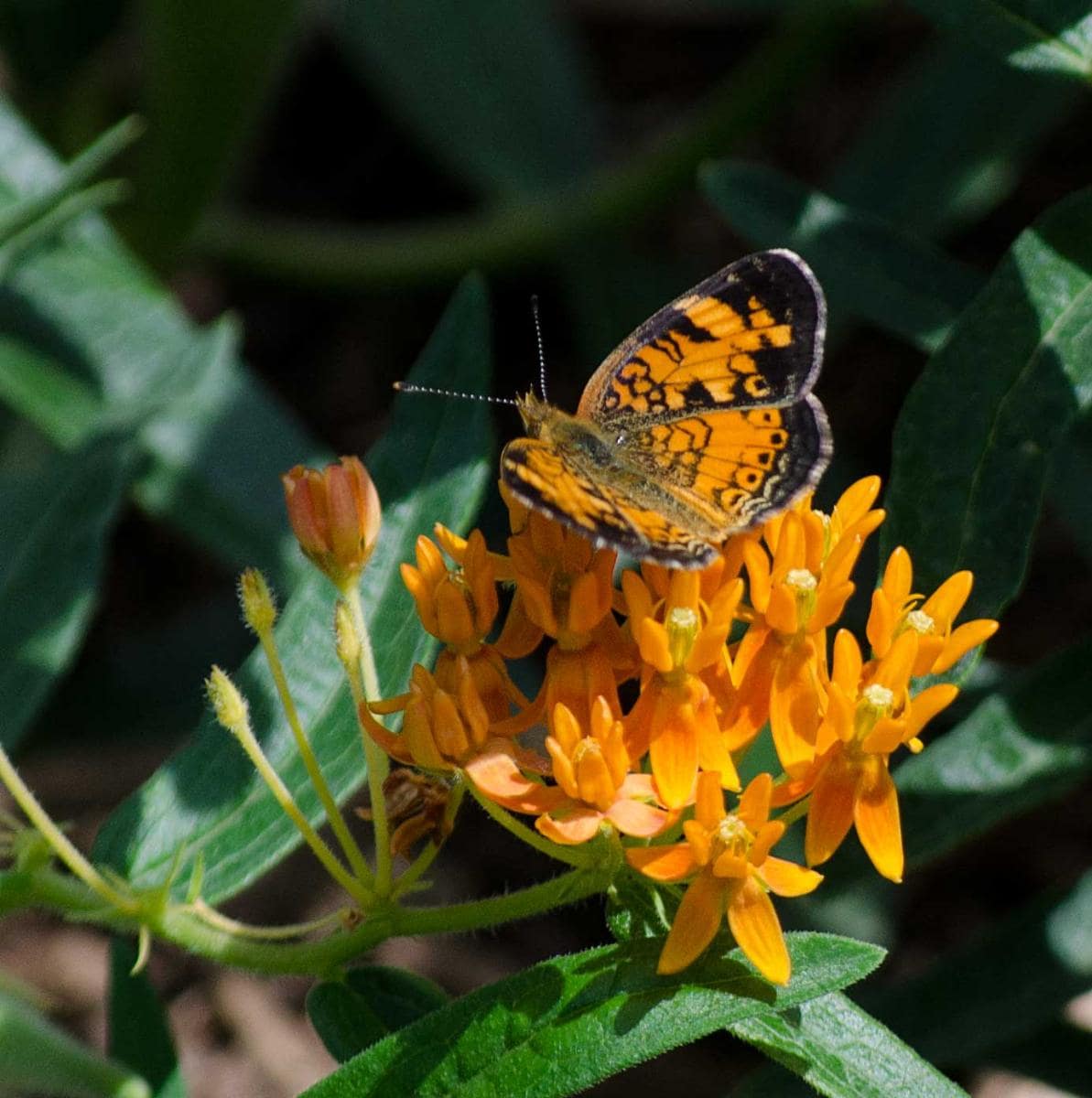
Pearl Crescent butterfly on Butterfly Weed
Butterfly weed (Asclepias tuberosa) is a member of the milkweed family, making it an important plant for maintaining monarch butterfly populations. Monarchs only lay eggs on milkweed plants and many folks consider this species much prettier than the common milkweed. It is also quite popular with many other butterflies besides the Monarch. This native, with bright orange flowers, tolerates dry conditions which is helpful to those who are less than diligent in watering their gardens. If you let the seed pods go, it can self-sow in the garden, giving you more plants next year. The plant can be slow to emerge in the spring, so don’t give up hope when you think the winter weather has done it in. It just waits for all the other plants to arrive before it makes its entrance.
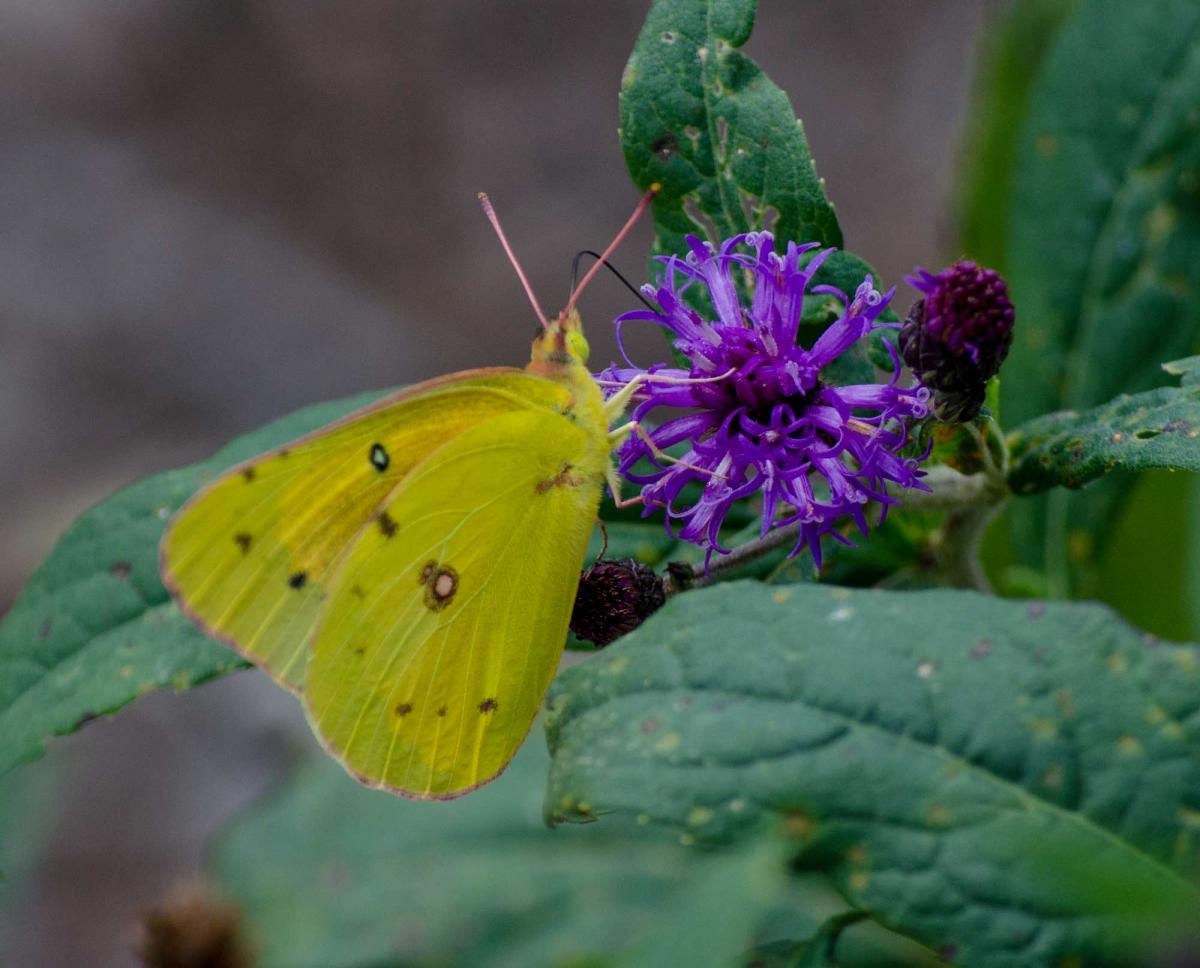
Orange Sulphur Butterfly on Ironweed
Ironweed (Vernonia noveboracensis) is another tall, back of the flower-bed plant. The purple flowers top a plant that can grow 6 feet or more. Similar to Joe Pye weed, it is a late summer bloomer. We had ours in the perennial garden for many years, but it was too large for the space so we replanted it in the south lawn where it thrives. There are numerous theories about the source of the name—the stems are tough like iron, the flowers get a rusty tinge when they start to fade, or the seeds have a rusty color. In any case, it is a tough plant (the deer don’t like it, which is important in our garden) and definitely worth growing for the colorful flowers.
So the next time you are worried about all the weeds in your garden, remember that there are some you want to keep. That should make the chore a little less daunting.
Join Perry on his next FREE Garden Walkabout, tomorrow, September 2, and see the gardens in full summer bloom! Tomorrow is also the last chance to enjoy FREE extended Wednesday hours for the Glen Burnie House & Gardens (open for free from 10 a.m.–8 p.m. thanks to sponsor Howard Shockey & Sons, Inc.)
Previous Posts:
7/31/15 Cool Plants for the Summer
6/5/15 Let Me Tell You A Story
Photos by Director of Gardens Perry Mathewes.